If competition is on your radar, you’re already asking better questions than most social dancers. How do you get from relaxed tandas to precise, stage-ready execution without losing your musical soul? At Tango Canada Academy, we coach dancers who want results that hold up under lights, judges, and nerves. The fastest lever, time after time, is a smart plan built around tango workshops and focused coaching.
Used well, tango workshops compress learning, expose you to diverse styles, and stress-test your partnering under real constraints. Paired with professional coaching, tango workshops become the backbone of a training plan that improves technique, strategy, and artistry. This guide demystifies tango workshops for competitors (and ambitious social dancers), showing how to map a season, choose events, and convert notes into measurable progress.
What are tango workshops—and why do competitors love them?
Not just extra classes
Unlike weekly lessons, tango workshops are short, intensive modules targeting a skill cluster: e.g., close-embrace turns, musical phrasing, or floor craft for crowded lanes. Because tango workshops compress time and raise focus, they deliver a clear bump in capability—especially when you prepare and debrief deliberately. For competitors, tango workshops also mirror performance pressure: unfamiliar partners, fast instruction, and immediate application.
How tango workshops differ from regular classes
- Tight scope and clear outcomes (one theme, deep drilling)
- Higher density of feedback and demonstrations
- Mixed partner pool that forces adaptability
- Built-in deadlines (learn now, show now)
The comp advantage
Championships reward clarity, musical intent, and floor discipline. Tango workshops simulate these demands in a supportive, low-risk environment. Over a season, well-chosen tango workshops act like rungs in a ladder—each one raising your ceiling and making the next rung reachable.
The four pillars of competitive readiness
1) Technique you can trust
Clean posture, axis, and weight transfers are non-negotiable. Use tango workshops that emphasize balance under rotation, small-space stability, and close-embrace precision. Your goal: movement quality that stays consistent on unfamiliar floors.
Minimum technical benchmarks
- Walk with full collection at three step sizes
- Pivots with a vertical spine and quiet hips
- Ochos that begin from the torso, not the feet
2) Musicality that judges can hear
Great rounds sound visible. Seek tango workshops that separate pulse, phrase, and pause; then give you tools to choose one layer per tanda. Train orchestra-specific strategies so your phrasing looks intentional, not accidental.
3) Connection that protects your partner
Competition isn’t choreography; it’s a relationship shown clearly. Prioritize tango workshops that develop embrace adaptability, tone control, and micro-leading/micro-following. The cleaner the conversation, the higher your scores.
4) Floor craft as a superpower
Judges notice collisions and chaos. Tango workshops that rehearse lane discipline, emergency exits, and step-size management will save you points and partners. Floor craft turns risk into style.
Mapping your season with tango workshops
Pre-season (8–12 weeks)
Load up on foundational tango workshops that rebuild posture, axis, and walking quality. Pair each weekend intensive with a mid-week review so the gains don’t evaporate. Early investment here compounds.
Build phase (6–8 weeks)
Choose tango workshops that add vocabulary you’ll actually use under pressure: compact turns, sacadas that slot into traffic, rebounds that reset without drama. Keep the emphasis on reliability over flash.
Peak & taper (last 3–4 weeks)
Shift to tango workshops that focus on musical shaping, round simulation, and stress inoculation. Reduce volume, keep intensity: short, precise reps that leave you eager rather than exhausted.
How to choose the right tango workshops (and skip the wrong ones)
Fit the workshop to your current bottleneck
If balance wobbles, a flashy volcadas weekend won’t help. Audit your rounds and pick tango workshops that solve the highest-leverage problem.
A simple selection checklist
- Does the theme address a documented weakness?
- Will the teacher’s approach complement your coach’s cues?
- Is there partner rotation to build adaptability?
- Are there materials (notes, video) for post-workshop review?
Vet the teacher’s communication style
Credentials matter, but clarity matters more. Watch a sample class or clip. If you can paraphrase the method after two minutes, the tango workshops will likely land.
Mind the logistics
Travel, floor quality, schedule spacing—these practical elements decide whether tango workshops translate into performance or just fatigue. Protect sleep and recovery.
Professional coaching: the converter module
Why coaching multiplies workshop value
Tango workshops pour water into the bucket; coaching patches the holes. A good coach converts raw input into a plan that fits your body, partner, and timeline. They set targets, filter noise, and hold you accountable.
What to expect from a competitive coach
- Periodized plan that sequences tango workshops, practices, and rest
- Technical priorities translated into drills and micro-metrics
- Round simulations with objective scoring and video review
- Stress strategies (breath, cue words, reset rituals)
Red flags
- Only choreography, no foundations
- Vague cues you can’t reproduce under pressure
- No plan for taper week
- Dismissal of injury prevention and recovery
Build a weekly training loop around tango workshops
Monday—integration
- 30–40 minutes solo: posture stack, slow walk, pivot pulses
- 20 minutes partner: embrace tone ladder (light/medium/firm), compact ochos
- Note one cue that improved stability—add it to your deck
Wednesday—precision
- 15 minutes musical drills (pulse vs. phrase)
- 30 minutes figure family you’ll actually use
- 10 minutes floor craft: lane changes, exits, micro-pauses
Friday—simulation
- Two “rounds” to three orchestras
- One video review, two corrections only
- Breath + reset ritual after each tanda
Weekend—tango workshops or targeted private
Use tango workshops to introduce one new variable; lock it in with coaching the following week.
The science of stress: keep your head while your feet work
Inoculate, don’t avoid
Nerves are not the enemy; surprise is. Seek tango workshops that include timed drills, unknown partners, and live feedback. Brief exposure to discomfort increases your ceiling for calm later.
A 60-second reset
Exhale long (count of 6), soften hands and jaw, locate the pulse, take one small walk step. This resets the loop between brain and body so your technique—trained in tango workshops—has a chance to appear.
Fuel, recovery, and injury prevention for competitors
Fuel the work you want to see
Steady carbohydrates and hydration before tango workshops keep your brain available for learning. Carry a simple snack (banana, nuts) for long days.
Love your feet and calves
Warm up ankles, do gentle eccentrics for calves, and choose suede/leather soles you can pivot in. A blister during tango workshops is a tax on attention you can’t afford.
Sleep is a skill
If travel is required for tango workshops, control what you can: same bedtime window, dark room, low caffeine after noon. You’re training your nervous system to deliver under novelty.
10 myths about tango workshops (and better truths)
- “Workshops replace coaching.”
Truth: tango workshops are inputs; coaching turns inputs into outcomes. - “More hours = more progress.”
Truth: the right hour, followed by review, beats three unfocused ones. - “Big names guarantee big gains.”
Truth: teaching clarity rules; sample before you buy. - “New figures win medals.”
Truth: judges reward quality, musical intent, and floor craft. - “Close embrace is always harder.”
Truth: without axis, yes; with axis, it often clarifies choices. - “You should feel exhausted after good tango workshops.”
Truth: you should feel clearer; fatigue is not a metric. - “Video is only for advanced dancers.”
Truth: video makes blind spots visible at any level. - “I’ll fix nerves once technique is perfect.”
Truth: pressure practice belongs from day one. - “If my partner struggles, we need harder content.”
Truth: you likely need simpler, clearer content. - “Competition ruins artistry.”
Truth: boundaries can sharpen taste and intention.
Travel strategy for out-of-town tango workshops
Budget like a pro
- Early-bird registrations, shared lodging, and public transit maps
- Pack a mini-kit: tape, blister pads, electrolytes, spare laces
- Schedule a rest day post-travel so tango workshops don’t become recovery sessions
Make the most of the room
Arrive early to test floor speed; pick shoes accordingly. Introduce yourself to partners; set one focus (“small steps and clear pauses”). Treat tango workshops as rehearsals for the composure you want on stage.
Data you can use: measuring progress from tango workshops
Simple metrics
- Step size variance in crowded lanes
- Number of balanced pivots per minute
- Percent of planned pauses actually danced per tanda
- Self-rated calm at start of each round (1–5)
Track before and after tango workshops. Improvement that you can see and feel will keep motivation honest.
Case studies: turning learning into podiums
Duo A: From wobbly pivots to clean turns
They scheduled three local intensives six weeks apart, each on rotation mechanics. Between events they used a two-drill protocol: quarter-turn pulses and compact molinetes. Video showed a 40% reduction in hip sway. In their next event, judges praised clarity and small-space control.
Duo B: Musicality that reads from the balcony
Instead of chasing new figures, they alternated phrasing labs with walk quality clinics. Their rounds became calmer, pauses intentional. The comment sheets highlighted “visible conversations with the orchestra,” a direct payoff from targeted training.
Solo follower: Confidence through connection
She focused on embrace tone and balance labs, then booked two privates to integrate cues. Reduced grip in the hands, more clarity through the back. Partners reported she felt “present and light,” and her finals placements followed.
Judging criteria decoded (so your training matches the scorecard)
What panels actually reward
- Quality: posture, axis, and articulation visible from the wings
- Musicality: phrases that breathe, not just count
- Partnership: comfort and safety, even when crowded
- Navigation: elegant solutions to traffic, never reckless
What they forgive
A missed adornment disappears if the walk is honest. A small stumble is forgotten if recovery is musical and kind. Train to these realities, and your time in events and tango workshops pays dividends that matter.
Budgeting and ROI: making smart choices
Where to spend
- Coaches who translate ideas into cues you can repeat under pressure
- Fewer, better-timed intensives with clear objectives
- Shoes that let you pivot without fear
Where to save
- Fancy travel when a local event meets the same need
- Over-collecting figures you can’t deploy
- Endless merch; invest in recovery instead
Think in seasons. The right sequence of coaching and tango workshops beats a scatter of shiny weekends every time.
Partner alignment and communication
Shared language before shared choreography
Great competitors sound the same musically before they look the same visually. Agree on cue words for direction, rotation, and pause length. Build a tiny glossary together—“light,” “float,” “anchor,” “inside”—so a single whisper in the embrace triggers the same response. This vocabulary reduces friction in classes, in practice, and during crowded rounds.
Conflict is data
Disagreements are often about timing, not personality. When something feels off, test two fixes: shrink step size by a third and slow the initiation by a breath. Most partnership drag disappears instantly. If not, film 20 seconds and watch it without sound; posture and axis issues jump out when the audio is gone.
Rehearsal etiquette
Show up early, warm up alone, and state the goal of the session before touching the floor. End by capturing one success and one carry-over note. The couples who treat preparation like performance are the ones who look unflappable under pressure.
Sportsmanship, community, and long careers
Win with style
Thank organizers, respect lane rules, and apologize for bumps even when you weren’t at fault. Judges do notice demeanor. More importantly, so does the community that will become your training network.
Give back as you climb
Volunteer at local events, share notes with beginners, and lend a spare pair of practice shoes when someone forgets theirs. Teaching something simple—how to breathe in the pause—cements your own understanding.
Sustainability beats spikes
Peak seasons are exciting, but longevity is the real prize. Protect sleep, rotate footwear to spare your calves, and plan break weeks after heavy travel. You want a career that feels good ten years from now, not just a medal next month.
Media, feedback, and your competitive story
Use video wisely
Record brief clips, not entire sessions, and review with a single question in mind: “What is the next smallest fix that would change the most?” This keeps review sessions tight and motivating.
Build a simple portfolio
Two or three high-quality clips, a short bio, and a clear headshot help organizers remember you. When guest educators visit town, a tidy portfolio makes it easier to request a short critique or a practice slot.
Curate your influences
It’s tempting to mimic the last performance you loved. Instead, list three qualities you admire—calm walk, spacious phrasing, impeccable navigation—and chase those. Qualities scale; copies don’t.
Why Choose Tango Canada Academy
Tango Canada Academy blends high-caliber pedagogy with a culture that values clarity over hype. We design training plans where tango workshops and coaching reinforce each other—so gains stick. Whether you’re preparing for your first local event or a national championship, we build the foundation and the performance mindset you need.
What you’ll experience
- Season mapping that sequences tango workshops, practice blocks, and taper weeks
- Technical systems for posture, axis, and floor craft that survive pressure
- Orchestra-specific musical strategies that judges can see
- Round simulations with scoring rubrics, notes, and video breakdowns
- Access to guest intensives and curated tango workshops that fit your goals
Our mission is simple: make your results reproducible—any partner, any floor, any day.
Canadian resources to support your learning
Explore national programs that uplift dance training and cultural participation:
- Canada Council for the Arts — Dance (funding and initiatives that support learning, creation, and touring)
- Canadian Heritage — Arts and Cultural Participation (programs that foster cultural learning and community arts)
Use these resources to offset travel, access festivals, and connect with communities where training and performance opportunities thrive.
Train for clarity, compete with joy
Competition is a lens, not a destination. The skills you gain on this path—balance, breath, musical intention, partnership—make social tandas richer and rehearsals more satisfying. With a clear plan, well-chosen tango workshops, and coaching that respects your time and body, you can build a career (or a season) that feels like you.
Tango Canada Academy invites you to map your next quarter with us. Choose three tango workshops that solve real problems, pair them with a focused coaching block, and simulate your rounds before you ever step on stage. Results follow plans. Joy follows clarity. Both are within reach.
Frequently Asked Questions
1) How many tango workshops should I attend before my first competition?
For most dancers, two to three targeted tango workshops in the eight weeks prior—paired with weekly coaching—create visible gains without burnout.
2) Are online tango workshops useful for competitors?
Yes, if they include drilling assignments and video feedback. Combine online training with in-studio coaching to verify mechanics on real floors.
3) What’s the best way to retain material from tango workshops?
Debrief the same day: rewrite cues in your own words, record a 60-second recap, and schedule a review session within 72 hours. This locks in learning.
4) How do I choose between musicality and technique-focused tango workshops?
Alternate. One technique block to stabilize your body, then a musicality block to shape choices. The alternation keeps training practical and expressive.
5) Do I need a fixed partner for tango workshops aimed at competition?
Not always. Rotations improve adaptability. If you compete as a pair, supplement open-rotation events with partner-specific coaching.
6) How can I avoid injury during intensive tango workshops?
Warm up ankles and calves, keep step size modest, and rotate shoes if the floor is sticky. Plan sleep and hydration around the schedule to protect recovery.
7) What should my week look like if I’m using tango workshops to peak for an event?
Two short integration sessions, one simulation day, and one rest day. Use a late-stage intensive in the final two weeks for round rehearsal and nerves practice.
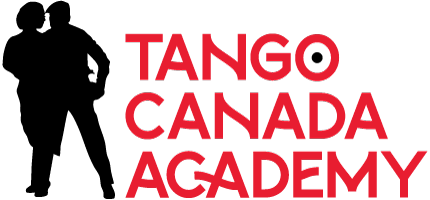
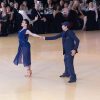
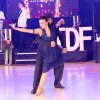
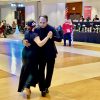
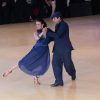




Comments are closed